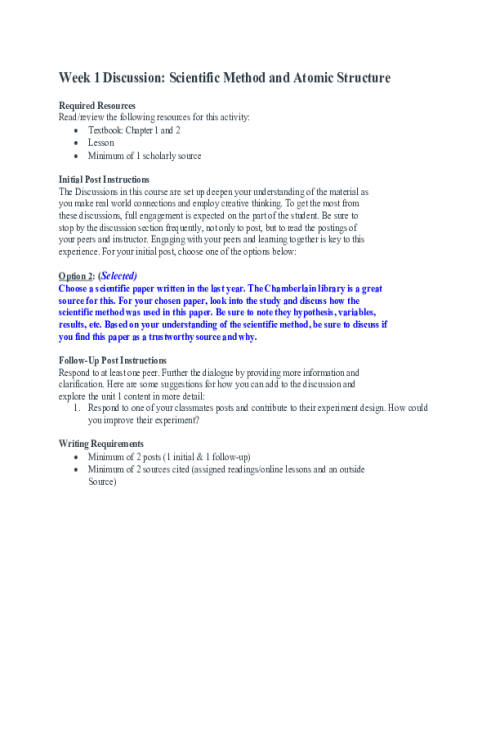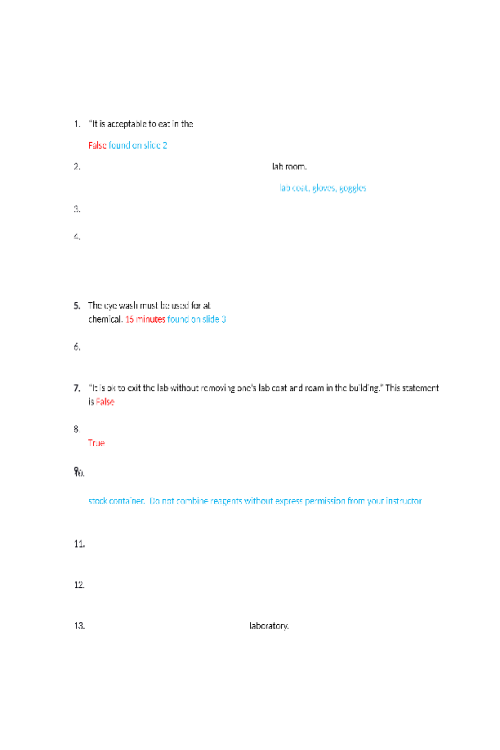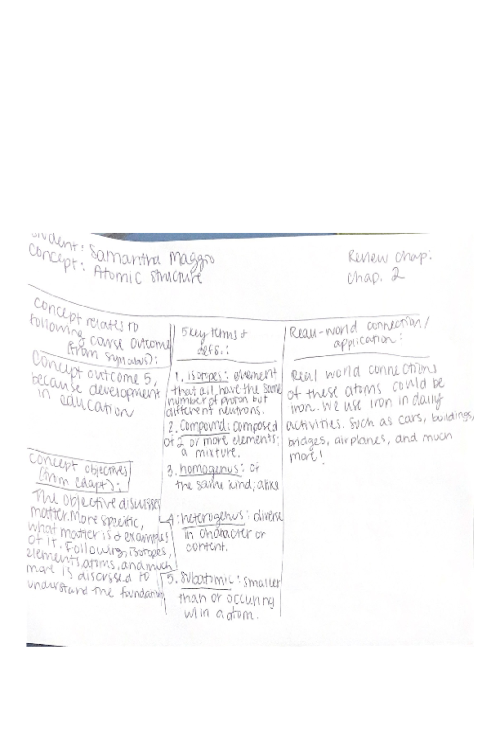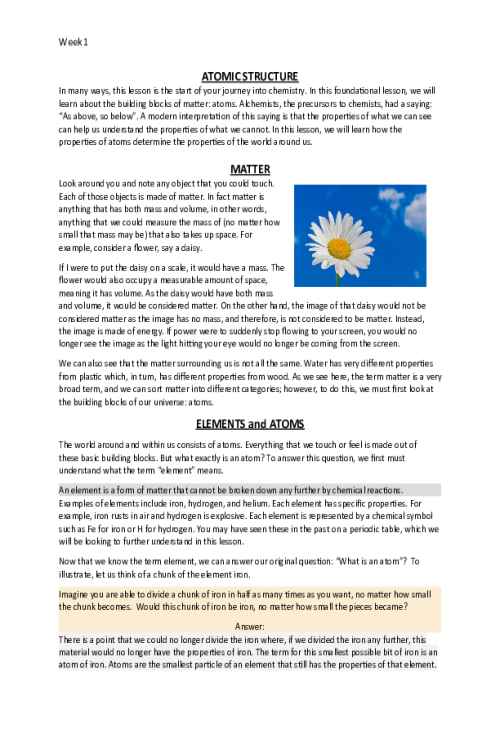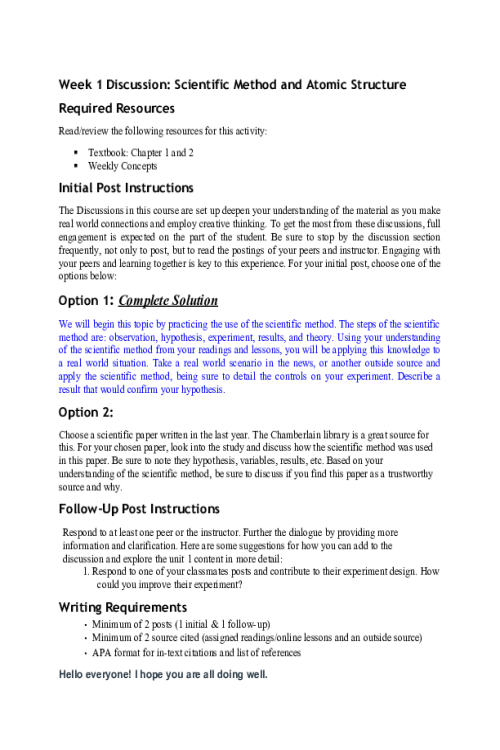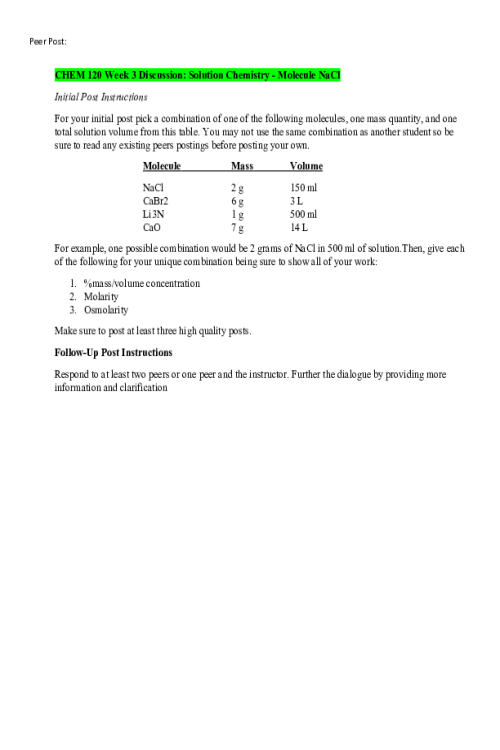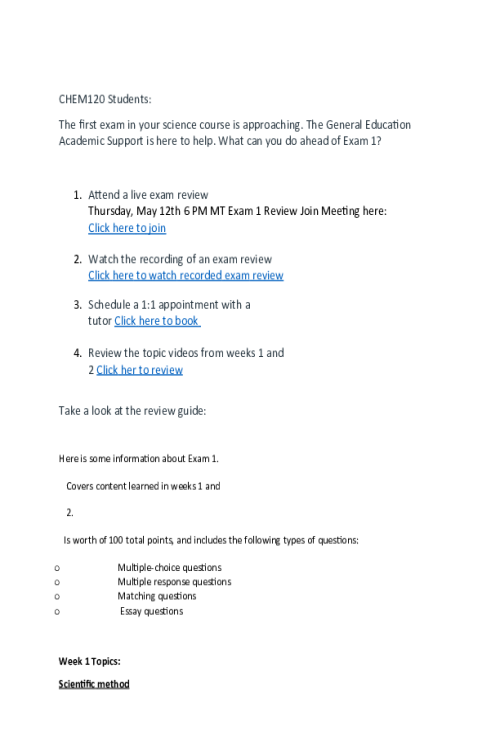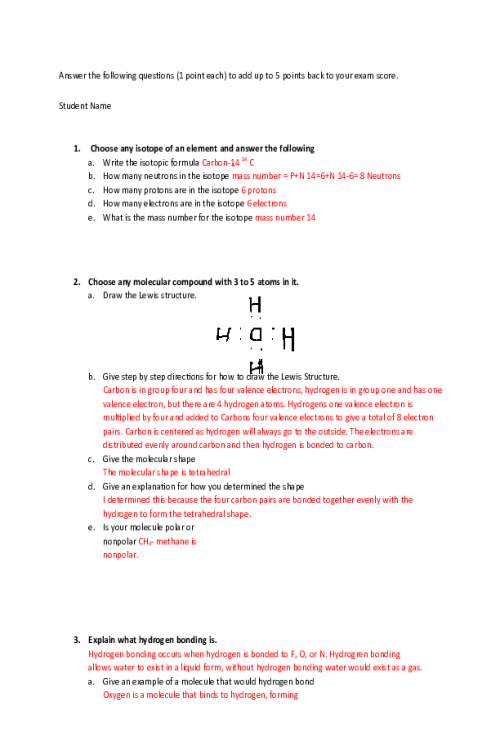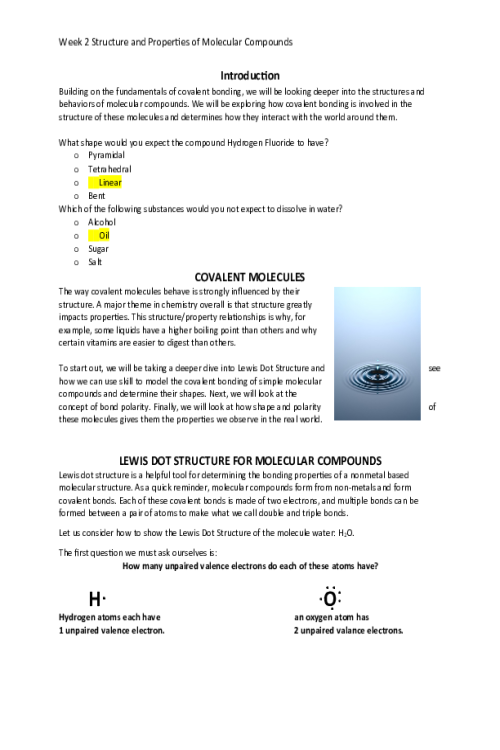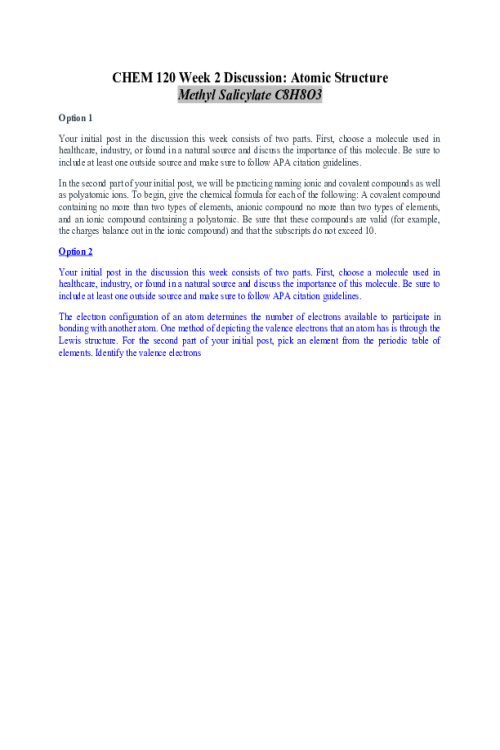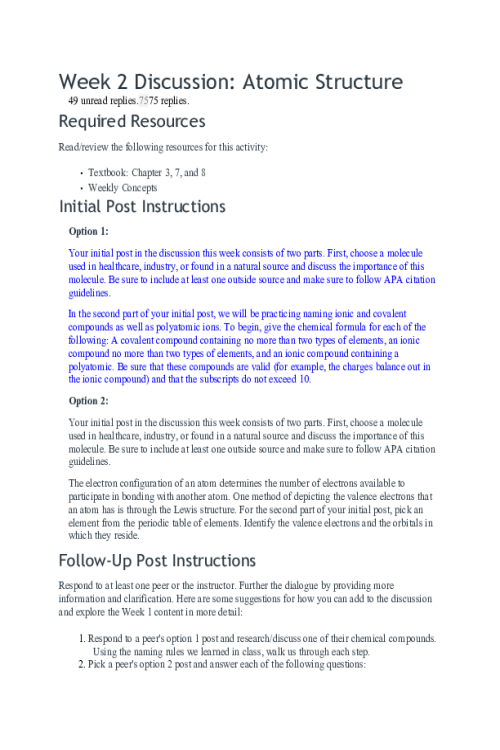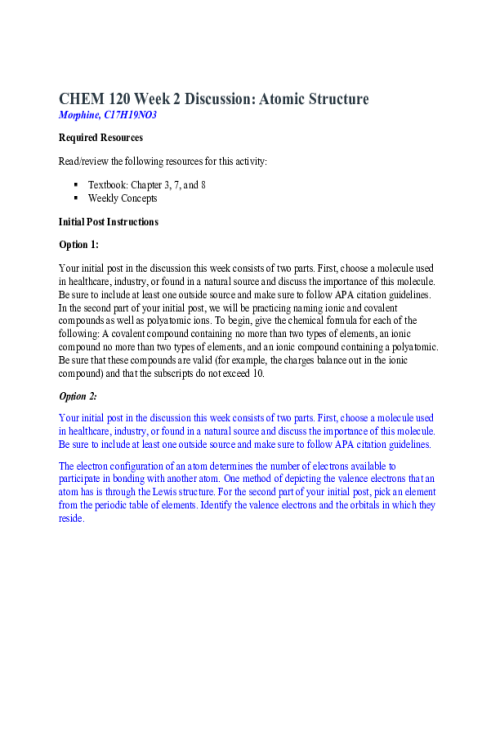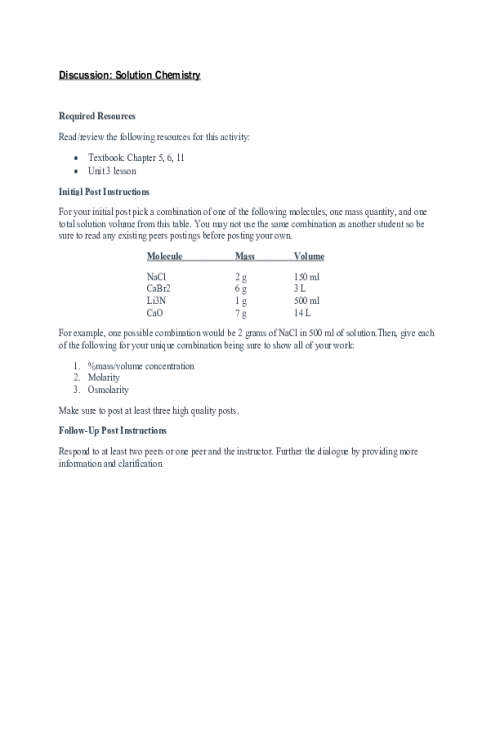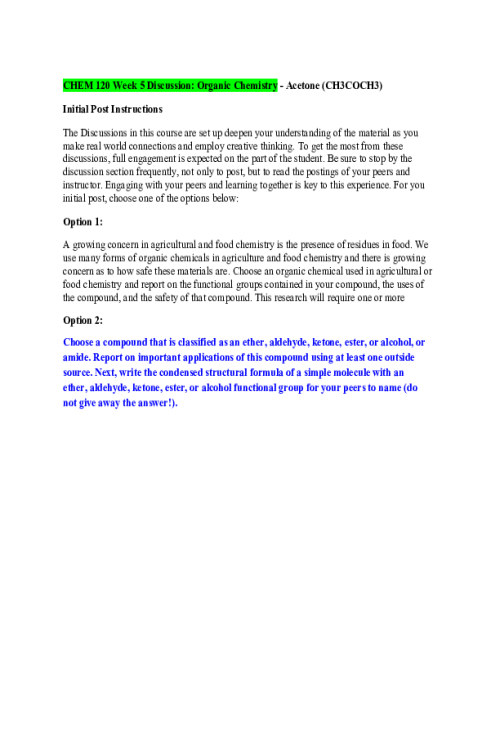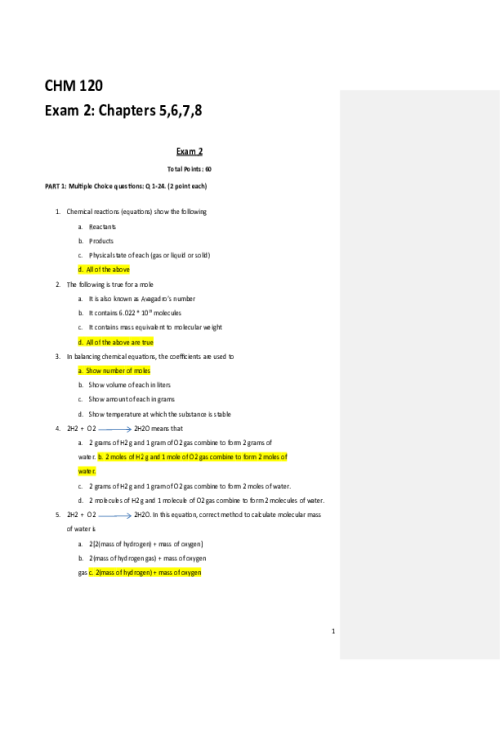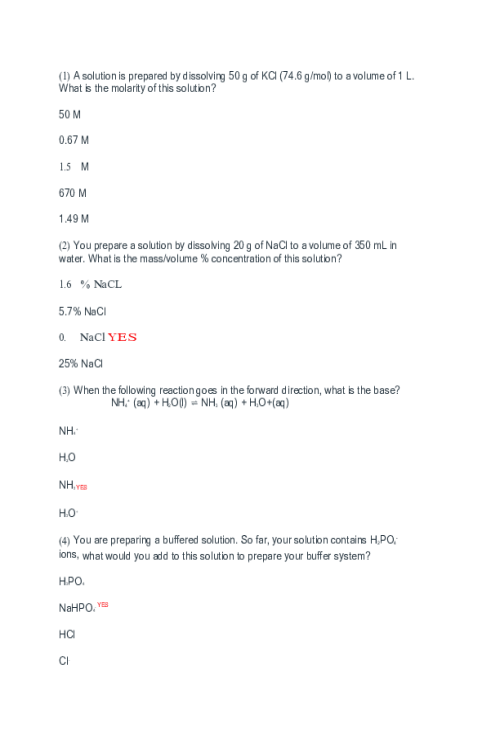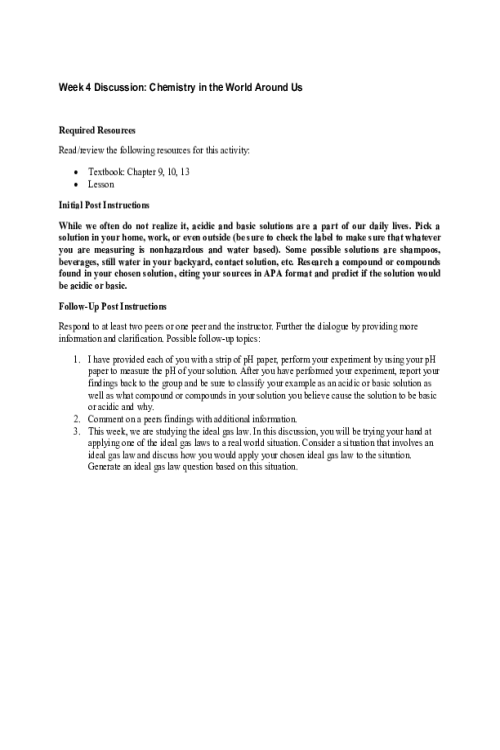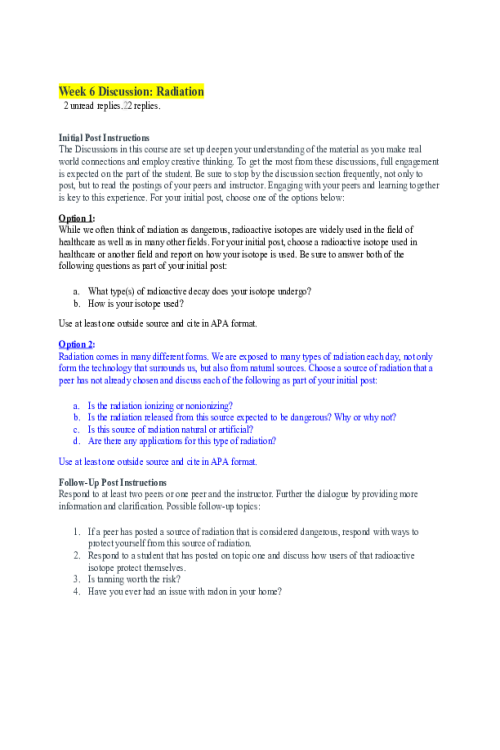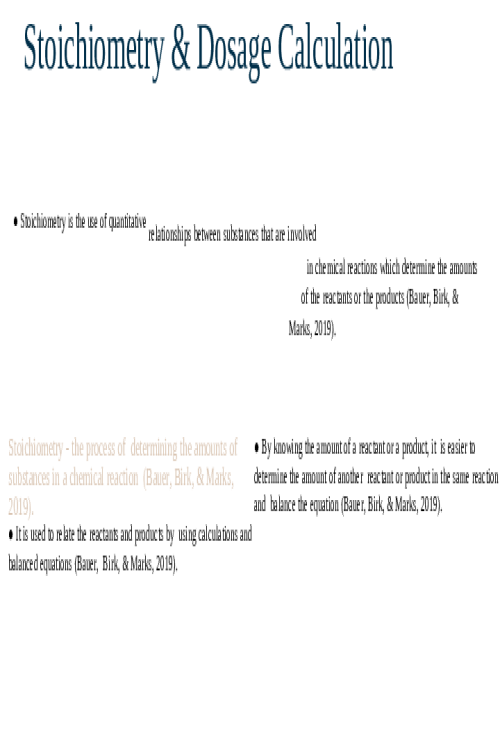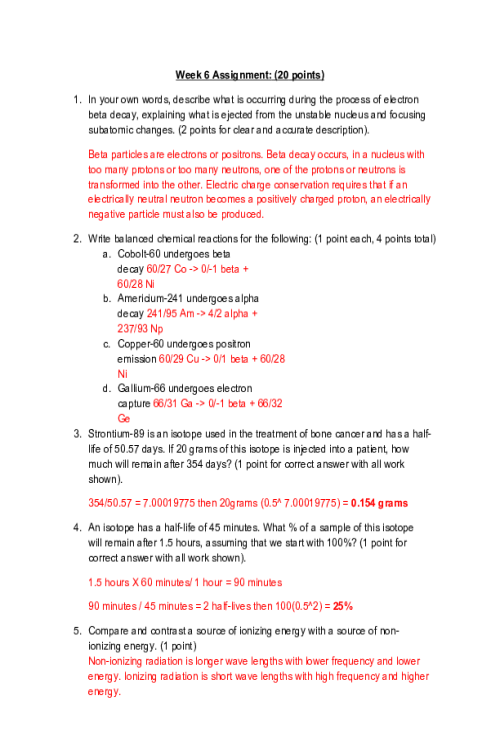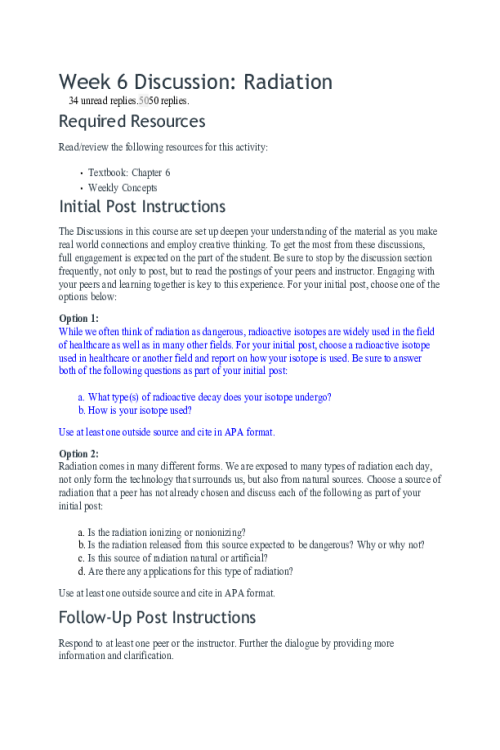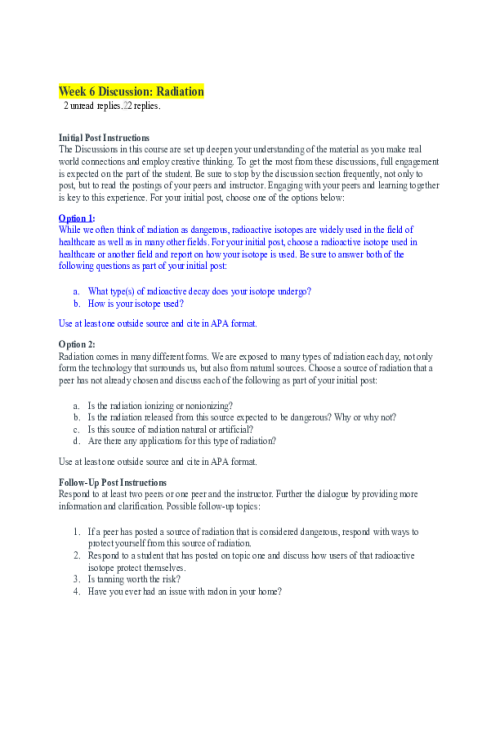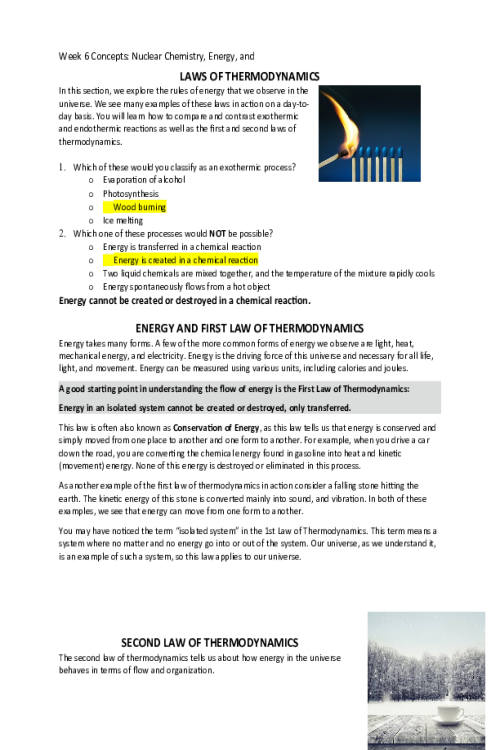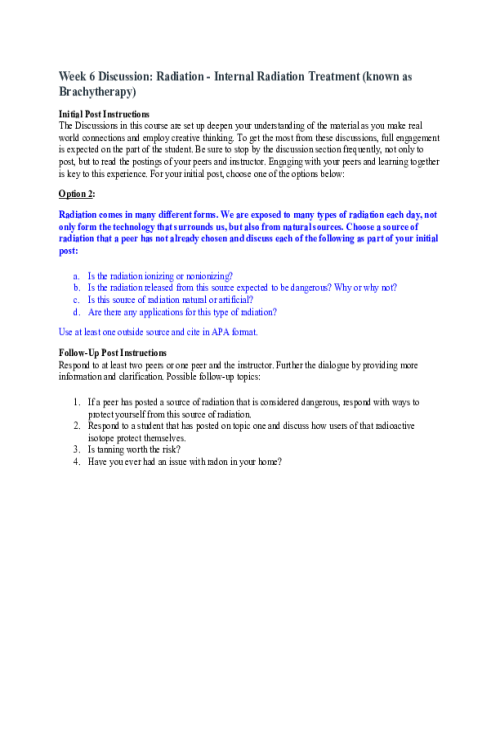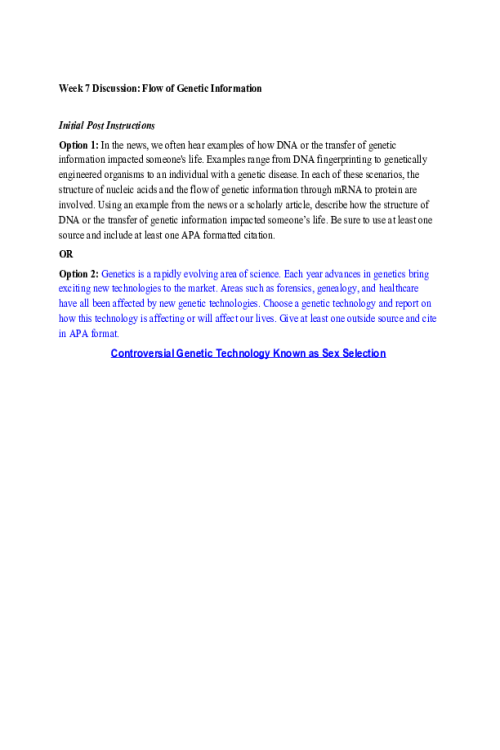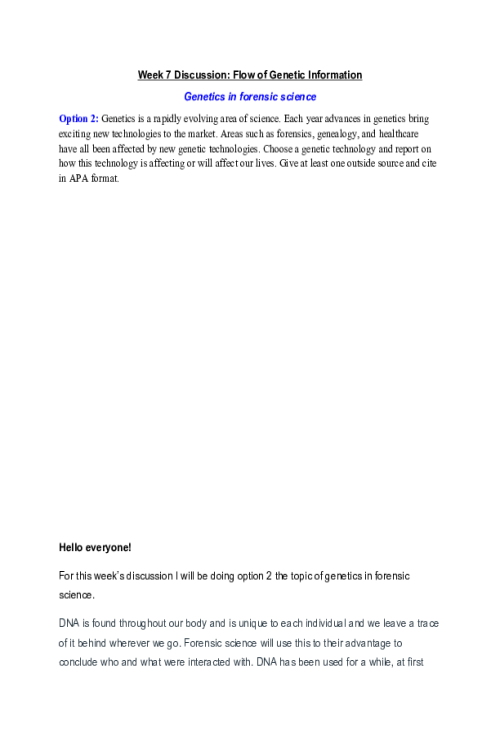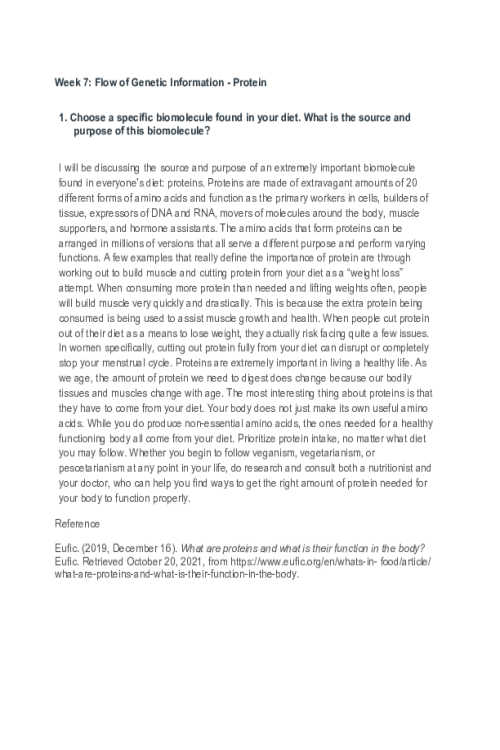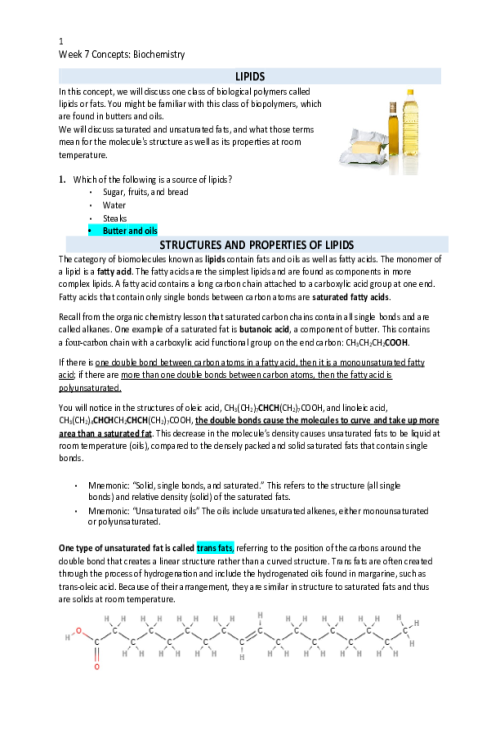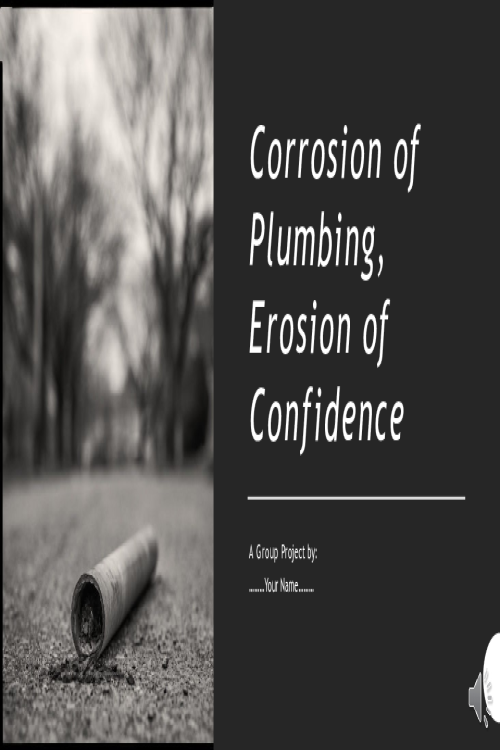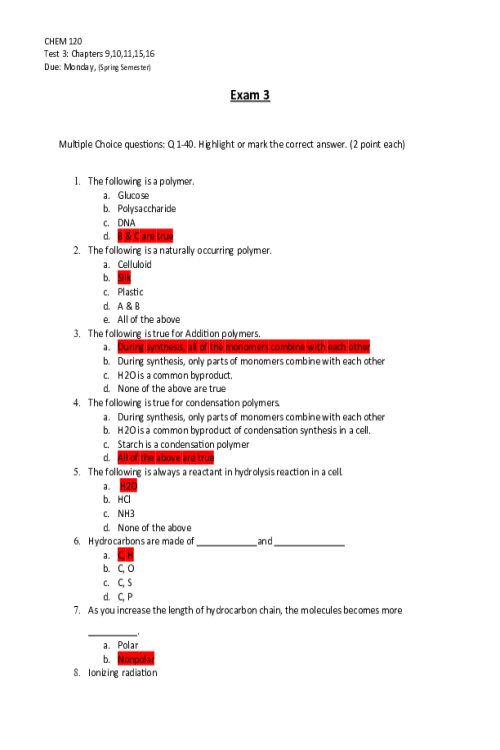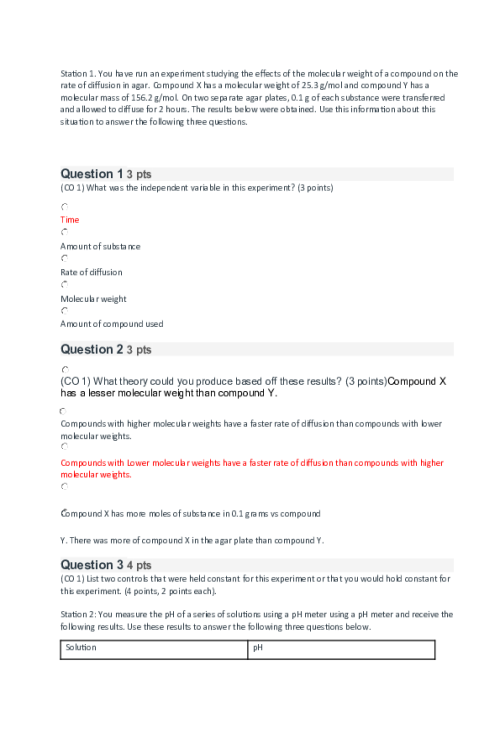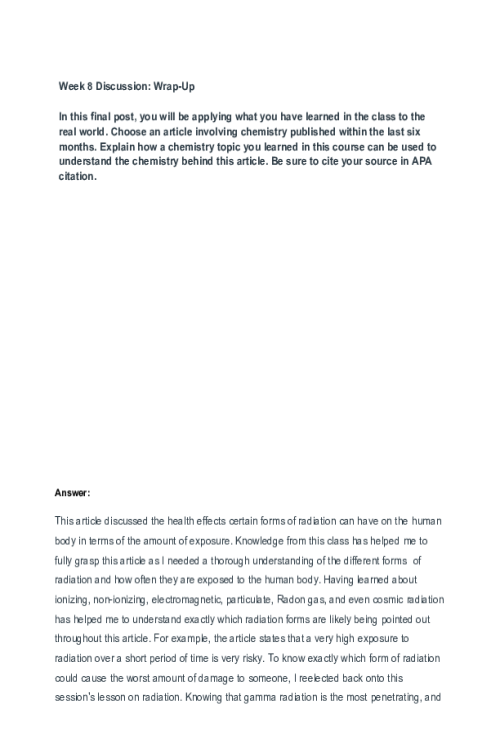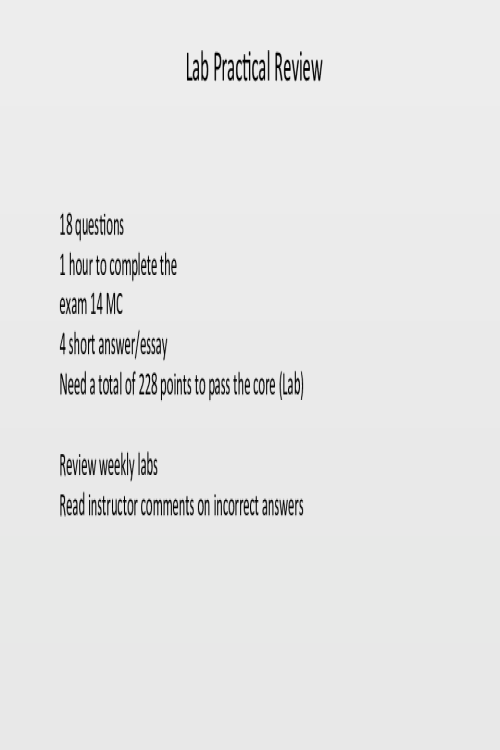CHEM 120 Week 4 Concepts; The Ideal Gas Laws and Acid-Base Reactions
PHYSICAL STATES OF MATTER In this section, we will discuss the Ideal Gas Laws. First, we will review the properties of solids, liquids, and gases. Second, we will discuss the kinetic-molecular theory of gases, which explains why they are so unique compared to other states of matter. Finally, we will discuss gas law equations, and practice using them to solve for different parameters. This unit has many strong connections to our daily lives as we are surrounded by examples of the materials we are studying. Our breathing depends on the gas laws we will be studying. Particles are tightly packed in a set pattern, with a fixed volume and shape. Solid Particles are close together with no regular pattern of arrangements; has a set volume that will take the shape of the container it is placed in Liquid Particles are well separated with no arrangement, and does not have a set volume but rather adapts to the entire volume of the container it is placed in Gas CHARACTERISTICS OF STATES OF MATTER This is important in terms of chemical reactions, because particles must be in close proximity in order to react. In solids, the particles are closely packed together; the rigid conformity to their packed structure often prohibits extensive reactions, but nonetheless chemical reactions occur in the solid state. Most known chemical reactions take place in the liquid state, because the particles are closely interacting, but also have some flexibility of movement. Gases are unlike solid and liquids because the particles have very few interactions, and the interactions are transient. Solid Liquid Gas Fixed shape No fixed shape No fixed shape Shape not set by container Takes shape of filled portion of the container Takes shape of container Shape remains rigid Can be poured Fills container Particles fixed in place but vibrate around a fixed position Particles move past one another Particles move through space Little or no volume change under moderate pressure Can be compressed slightly by moderate pressure Compressed under moderate pressure Little free space between particles Some free space between particles Particles are widely separated with much free space Regardless, all states of matter are capable of chemical reactions. For example, solid wood can react with gaseous oxygen (O2) and a spark to create a fire, producing CO2 and H2O gases. The human body brings in gaseous oxygen (O2) which dissolves into liquid blood and expels gaseous CO2 as waste. Oxygen gas is inhaled to the lungs, and brought into the blood, which is a liquid. Our bodies exchange the oxygen for carbon dioxide, which is a gas. The carbon dioxide is forced out of lungs by increasing the pressure of the lungs. Is the quality associated with solids, liquids, or gases, or multiple? Note yes/no for each. Solid Liquid Gas Shape is fixed Yes No No Shape depends on container No Yes Yes Volume is fixed Yes Yes No Particles touch, with some but not much space between particles Yes Yes No Particles move through space easily, with much free space between particles No No Yes KINTETIC MOLECULAR THEORY OF GASES 499237012365The gas laws allow us to approximate how a gas will behave in a given situation. We will be looking at several of these gas laws: Boyle's Law, Charles' Law, Avogadro's Law, and the Ideal Gas Law. These laws are useful but not perfect as these laws rely on a set of assumptions that makes these gases “ideal”: When gas molecules collide, they bounce off each other but have no chemical reaction This is called a perfectly elastic collision, such as a ball bouncing on the floor Ideal gas molecules have no attraction to each other They will neither be attracted nor repelled Ideal gas molecules themselves take up no volume The gas as a whole has the volume of the container, but the volume of the individual molecule is negligible As part of the kinetic molecular theory of gases, we can correctly assume that gas molecules are in constant motion. This energy is directly proportional to the temperature of the gasses: more energy means higher temperature. Additionally, as the number of collisions increases the pressure will increase as these collisions apply force to the walls of the container. If the container is flexible, such as car tires or a balloon, as the collisions increase the volume can increase as a result. If the gas is in a fixed container such as an oxygen tank, spray can, or fire extinguisher, the volume is fixed and will not change. Similarly, if there are fewer number of molecules, the number of collisions will decrease. This can happen when air is let out of a balloon and can affect the pressure and temperature by decreasing the total number of collisions. Consider a hot air balloon: the flame heats up the gas in the flexible balloon. As the temperature increases, the pressure and volume of the balloon will increase. As the molecules take up more space, the density (mass per volume) decreases and allows the balloon to float. To land, the less dense hot air is released, and the flame turned down, decreasing the volume and slowing the collisions, decreasing the pressure, and increasing the density of the air in the balloon. This allows the balloon to land. Does the property apply to an ideal gas, non-ideal gas, or both? Ideal Gas No attractions Perfectly elastic collisions Molecules have no volume Non-ideal Gas Molecules do have a small volume Collisions can cause chemical reactions Both Ideal and Non-ideal Gas Molecules in constant motion Determine if the quality best describes solid, liquid, or gas state of matter. Can be compressed slightly by moderate pressure Liquid Particles collide but otherwise do not interact Gas Shape remains rigid Solid As the number of collisions of an ideal gas increases, which of the following will also occur? the gas will become solid the gas will become compressed the number of chemical reactions will increase the temperature will increase the pressure will increase For ideal gases, the molecules themselves, which is one assumption of the ideal gas law. will have no collisions will have no temperature will have no volume will have no pressure Liquids and gasses both… take the shape of the container they occupy have perfectly elastic collisions have molecules that do not touch or interact can be poured We exhale CO2, a Gas. We drink water which is a Liquid. Our blood transports oxygen, a Gas. In a hot air balloon, the flame is turned down. What is the result? the density increases the pressure decreases the temperature decreases the volume decreases A rigid can of compressed air is used, releasing half of the contents. Which of the following is the result? the temperature decreased the pressure decreased the volume of the rigid can decreased GAS LAWS In t
Related Products
CHEM 120 Week 1 Discussion Option 1; Scientific Method and Atomic Structure
Contributor: Ellyse Perry
$10
CHEM 120 Week 1 Discussion Option 2; Scientific Method and Atomic Structure
Contributor: Ellyse Perry
$10
Related Products
CHEM 120 Week 1 Discussion Option 1; Scientific Method & Atomic Structure
Contributor: Ellyse Perry
$10
CHEM 120 Week 2 Concepts; Understanding the Structure and Naming of Molecules
Contributor: Ellyse Perry
$20
CHEM 120 Week 2 Discussion; Atomic Structure - Methyl Salicylate C8H8O3
Contributor: Ellyse Perry
$10
CHEM 120 Week 5 Discussion; Organic Chemistry - Dichloro-diphenyl-trichloroethane
Contributor: Ellyse Perry
$10
CHEM 120 Week 4 Discussion; Chemistry in the World Around Us - Shampoo Solution
Contributor: Ellyse Perry
$10
CHEM 120 Week 4 Discussion; Chemistry in the World Around Us - Vinegar that contains acetic acid
Contributor: Ellyse Perry
$10
CHEM 120 Week 7 Assignment; Group Project - Stoichiometry & Dosage Calculation (CO 4)
Contributor: Ellyse Perry
$20
CHEM 120 Week 6 Discussion Option 1; Radiation; Radioactive Isotope; Cobalt-60
Contributor: Ellyse Perry
$10
CHEM 120 Week 6 Concepts; Nuclear Chemistry, Energy, and Biochemistry Part 1
Contributor: Ellyse Perry
$20
CHEM 120 Week 6 Discussion Option 2; Radiation - Internal Radiation Treatment; known as Brachytherapy
Contributor: Ellyse Perry
$10
CHEM 120 Week 7 Discussion; Flow of Genetic Information - Controversial Genetic Technology Known as Sex Selection
Contributor: Ellyse Perry
$10
CHEM 120 Week 7 Discussion; Flow of Genetic Information - Genetics in Forensic Science
Contributor: Ellyse Perry
$10
CHEM 120 Week 7 Assignment; Group Project; How vitamins and mineralstrace elements affect healthhuman body (CO 3)
Contributor: Ellyse Perry
$20
CHEM 120 Week 7 Assignment; Group Project; Corrosion of Plumbing, Erosion of Confidence
Contributor: Ellyse Perry
$20
CHEM 120 Week 8 Discussion; Wrap-Up (Health effects of Radiation on the Human Body)
Contributor: Ellyse Perry
$15

